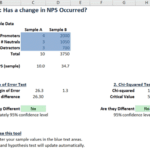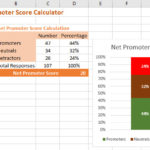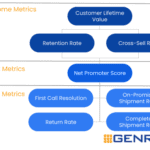AccessPay is part of the listed company SmartGroup, a leading provider of employee benefits programs to the not-for-profit sector, including salary packaging, novated leasing, fleet management, payroll administration and workforce optimisation services.
In December of 2019 the NPS for the group was 15. Mark Valana started in his new role as Customer Service Manager in September 2020.
Through consistent focus, individual and team action he has lifted the score to 53, as of Q1 in 2022.
Here is how he did it.

I figure that if someone’s giving you some feedback and you’re not reading it, or you’re not seeking to understand where there might be a problem, then why are you measuring it at all?
Mark Valana
1. Identify the Drivers of NPS
Early on in his role Mark focused on identifying what was driving NPS at AccessPay. While he had suspicions, the customer responses confirmed the areas to address.
He did this by a simple process of reading the comments and looking for common themes. The more often a theme was mentioned the more likely it was to be important.
I started digging into the Detractors and trying to understand, why? What was it?
After reading and digesting the feedback he identified opportunities for improvement in four main areas:
- Digital presence
- Mobile app
- Speed of answer; and
- Consistency of answer.
And he was specific about the impact they had on NPS:
We know that once we get past 180 seconds [speed of answer] …we start to drop in our NPS rating
2. Focus Change Within Your Span of Control
Having identified what drives NPS, Mark had to determine what to change.
Here he deliberately chose speed of answer and consistency of answer as his initial focus because he could make changes directly, without recourse to other stakeholders in the business:
I could make changes without [new or changed] technology, reliance on other parts of the business or external providers.
The solution turned out to be multipronged:
- Hiring the right people
- They changed recruitment agencies to find ones that were more effective in hiring the right people for the business.
- They changed their hiring process to include new elements including role plays to more effectively identify the right people for the business.
- Improved process documentation:
- They expanded and improved process documents so they are less reliant on individual knowledge and have more comprehensive tools to help them provide a better outcome to each call.
- Improved training
- They increased the amount and type of training provided to new staff
- Improved support for new hires
- They created an internal support line (SME) and a floor walker model after they left the training room
Some of these changes could be done as part of business as usual but they also needed to add approximately 6% more staff.
While this increased direct staff costs the overall benefits to the business are significant:
Staff turnover reduced substantially
New staff are now better trained and supported, curtailing the previous spike in staff turnover at the 3-6 month mark. This had the dual benefit of reducing recruitment and training costs while also improving consistency of advice.
I think the part that sort of goes unnoticed is that our experience on the floor has increased.
Along with the increased tenure, career pathing has now become more visible, providing staff with a rewarding journey within the organisation, helping to retain valuable corporate knowledge.
Call Volumes Reduced
Fewer customers call back due to inconsistent advice or long anwer times, reducing unit call volumes.
NPS Lifted Substantially
As has already been noted AccessPay’ NPS has lifted from 15 to 50 in two years but best of all speed of answer and consistency of advice have disappeared from negative customer comments:
Through that we’ve been able to almost wipe out those two things from any of the NPS commentary.
3. Daily Listening and Acting All The Way to the Top
…the first thing that I look at every morning is the results of my teams, and part of that is NPS.
The daily workload report [including NPS data] is socialized with the people in the business all the way up to our Chief Operating Officer who has visibility each and every day.
Listening to customers is not a once a quarter, month or even week task for Mark and the AccessPay team – it’s done every day all the way to the top of the company.
That daily CustomerGauge reporting rolls up to monthly and year to date information and is shared with the Contact Centre’s internal business partners. Eventually it makes its way into monthly Board reporting.
4. Close the Loop
A small team of senior staff, with more experience and sign-off ability, close the loop with respondents and actively manage the Detractors.
Here Mark’s approach is also interesting. Rather than following up all respondents equally, AccessPay focuses on those Detractors where they can make a difference.
It’s a little like the span of control idea above – work on what you can change.
Advice for Other NPS Programs
Mark has a couple of final key pieces of advice for those running NPS programs in other companies:
Create a Case for the Bigger Changes
The easiest part was to actually understand what was driving it. The hardest part was to not necessarily fix it, but to be able to present the opportunity and get the buy-in to address it
Focus on building the case for change and the funding that you require.
Don’t wait; Focus on taking action
One change he would make if starting all over again is to start implementing changes more quickly.
Don’t wait.
Start now.
I think I would do what I did quicker.
The Future
Where to from here for AccessPay?
They are certainly not stopping at 50.
Mark and the NPS feedback has helped develop the case for the business to address some of those things that were outside his immediate span of control.
Now they are looking at their digital presence and mobile app as opportunities.
Here we are and we’re climbing the mountain – what do you do when you get to the top? Wow. I don’t know if you ever get to the top. Right!










